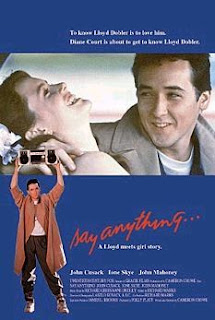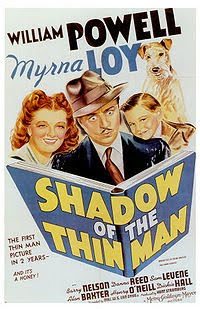* BOOKSHELF
* FEBRUARY 27, 2010
Iron-Horse Stampede
The rise and fall and possible resurgence of the railroad
By Mark Lewis
When Warren Buffett announced last fall that Berkshire Hathaway would buy the Burlington Northern Santa Fe Railway, some kibitzers wondered what he saw in a business based on 19th-century technologies. The answer, for those who care to look, can be found in Christian Wolmar's "Blood, Iron and Gold."
Mr. Buffett is communing with the ghost of James J. Hill, the one-eyed visionary who established the Great Northern Railway in 1889. Many years and many mergers later, it remains the ancestral corporate heart of the Burlington Northern. Hill's story is part of the epic romance of the railroads, skillfully recounted by Mr. Wolmar.
The railroad was born in Britain in the early 1800s as a means of transporting coal from mines to market. But proprietors of the early railways, such as the Liverpool & Manchester in Britain and the Baltimore & Ohio in the U.S., quickly discovered that people could also be profitably transported over great distances. The result was a revolution.
Blood, Iron and Gold
By Christian Wolmar
PublicAffairs, 376 pages, $28.95
An excerpt from the book.
"It is almost impossible to exaggerate the profound impact of the railways," Mr. Wolmar writes. "They transformed the agricultural economies, which had prevailed since mankind emerged from the caves, into the industrial age."
The emergence of this new form of transport "enabled the migration of wide swaths of the population from land-based employment or subsistence farming to paid work for capitalist businesses," Mr. Wolmar says. This newly mobile labor force ranged far afield, supplying manpower for a host of new industries.
The transforming effect of railroads ranged into the world of finance as well. Vast amounts of capital were required to build locomotives and freight and passenger cars, to lay down track, to acquire land, to build stations, to buy fuel, to pay wages. Railroad barons like Cornelius Vanderbilt became major players on Wall Street, while financiers like Jay Gould, J.P. Morgan and E.H. Harriman found themselves drawn into the railroad business.
Of course, the government played a role too, especially in continental Europe. Britain and the U.S. took a more laissez-faire approach to railroad development. But even in the land of free enterprise, politicians inevitably became involved in the process, not always with beneficial results.
Mr. Wolmar, who bills himself as Britain's leading railway expert, is something of a cheerleader for railroads, and he does not shy away from hyperbole. At least three times in this book he compares one railway project or another to the construction of the pyramids in ancient Egypt. But he has a point: The railroads were indeed a vast undertaking, vastly impressive in their technologies, accomplishments and social effects.
Most Americans are at least somewhat familiar with the epic story of the building of the Union Pacific and the Central Pacific railways, which famously converged at Promontory Point, Utah, on May 10, 1869. But this was not the first line to span the North American continent. That distinction technically belongs to William Aspinwall's Panama Railroad, completed in 1855. It was only 47 miles long, yet at least 6,000 workers succumbed to tropical diseases during its construction. Mr. Wolmar dubs it "the railway from hell."
He covers a great deal of territory in "Blood, Iron and Gold," but he keeps the reader engaged by highlighting extraordinary projects like the building of the Trans-Siberian Railway from 1891 to 1904. It connected St. Petersburg to Vladivostok, a distance of almost 6,200 miles. Equally stirring is the saga of Cecil Rhodes and his never-completed Cape-to-Cairo line; and that of Peru's vertiginous Central Railway, which ascends the Andes and passes through the Galera Tunnel, 15,694 feet above sea level. The book also features cameo appearances by such colorful figures as Benito Mussolini, who may or may not have made Italy's trains run on time but who definitely made them run faster and more frequently. Nor does Mr. Wolmar neglect the pop-culture angle: Agatha Christie fans will be sorry to learn that history records no instance of a real-life murder on the Orient Express.
By the end of the 19th century, railroads were ubiquitous. Railway managers scoffed at the notion that the newfangled horseless carriage might cut into their business. Mr. Wolmar quotes one particularly clueless executive on the subject: "The fad of automobile riding will gradually wear off and time will soon be here when a very large part of the people cease to think of automobile rides." That comment was made in 1916. Four years later, railroad traffic in the U.S. peaked at 1.2 billion passengers. By the 1930s the Iron Horse was in serious decline, thanks to the internal combustion engine.
Everett Collection
The Union Pacific and Central Pacific railways meet
at Promontory Point, Utah, on March 10, 1869, completing the first coast-to-coast rail link in the U.S.
he railroads shifted from steam power to electricity and diesel engines, but it was too late: Competition from cars, trucks, buses and airplanes cut deeply into their business. More recently, passenger service has mounted a comeback in much of the world, thanks in part to the popularity of high-speed rail. But not in the U.S., where intercity passenger service is now mostly confined to a few Amtrak routes in the Northeast Corridor.
The prospects are much brighter for freight, which is where Warren Buffett comes in. His new toy, the Burlington Northern Santa Fe, incorporates three of America's five original transcontinental lines. All but one—James Hill's Great Northern—were built with government support. Hill built his with private capital and his own implacable will. Mr. Wolmar describes him as "probably the greatest American railroader, who for 30 years pursued his vision of a line that would open up the vast prairies of Montana to settlers and allow the export of grain to the Far East."
As it happens, two of my great-grandparents were among the settlers that Hill lured to Montana a century ago. Neither of them ever got rich off the Far East trade, and neither did Hill, who made most of his enormous fortune from domestic traffic. But his Pacific strategy may well pay off for Mr. Buffett, thanks to China's rise. Rail traffic to and from the West Coast should be increasing for years to come. Hill was known as "the Empire Builder." Mr. Buffett may effect a restoration.
Passenger service too may finally be ready for a revival in the U.S. President Barack Obama recently earmarked $8 billion in stimulus funds for high-speed rail projects. Carl Icahn is backing a new venture that will manufacture passenger cars in Arkansas.
"Trains may be of the past, but they are still the future," Mr. Wolmar writes. "They will improve, not just on high-speed lines, but elsewhere too as technology makes them more efficient, more comfortable, and faster. And there is the rather delicious prospect that they might conceivably outlive the car." More hyperbole. And yet: Would you bet against Warren Buffett?
—Mr. Lewis is writing a book about America's colonial experience in the Philippines.



























